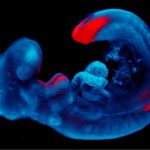Link to Pubmed [PMID] – 15880425
Am. J. Med. Genet. A 2005 Jun;135(2):145-9
A mosaic karyotype consisting of a 45,X cell line and a second cell line containing a normal or an abnormal Y chromosome is relatively common and is associated with a wide spectrum of clinical phenotypes. The aim of this study was to investigate patients with such a mosaic karyotype for Y chromosome material loss and then study the possible association of the absence of these regions with the phenotype, diagnosis, and Y-chromosome instability. We studied 17 clinically well-characterized mosaic patients whose karyotype consisted of a 45,X cell line and a second cell line containing a normal or an abnormal Y chromosome. The presence of the Y chromosome centromere was verified by fluorescence in situ hybridization (FISH) and was then characterized by 44 Y-chromosome specific-sequence tagged site (STS) markers. This study identifies a high frequency of Yq chromosome deletions (47%). The deletions extend from interval 5 to 7 sharing a common deleted interval (6F), which overlaps with the azoospermia factor region (AZF) region. This study finds no association between Y-chromosome loci hosting genes other than SRY, and the phenotypic sex, the diagnosis, and the phenotype of the patients. Furthermore, this study shows a possible association of these deletions with Y-chromosome instability.

